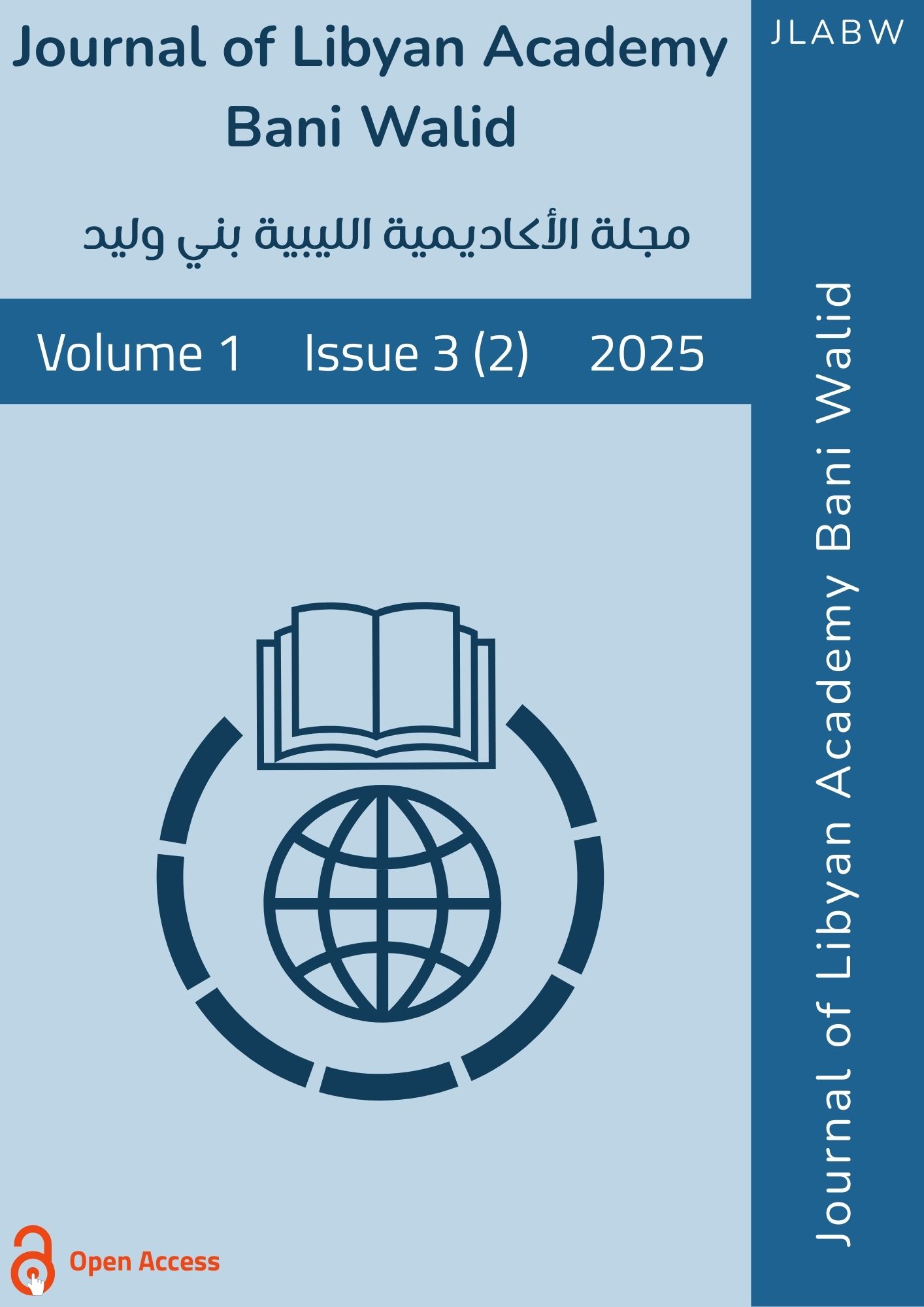Determine the relationship between some biochemical elements and estradiol hormone for women in the reproductive and menopausal stages
DOI:
https://doi.org/10.61952/jlabw.v1i3.199Keywords:
calcium, magnesium, estradiol, reproductive, menopausalAbstract
This study was conducted to estimate the concentration of magnesium, serum calcium and estradiol and to explain the effect of their deficiency on the menopausal group and the reproductive group and to compare the two groups, and to determine the relationship between the age groups of the study groups and both magnesium calcium and estradiol, where (60) samples were collected and divided into two groups, a group, the first was women of fertile age, with (30) samples from different age groups and 30 samples from menopausal women of different age groups, from women who frequented the precision laboratory, Al-Jazeera Laboratory and Msallata hospital. Using the statistical program, Statistical Package for Social Sciences (SPSS) Statistical Package for Science, where the arithmetic mean and the variables under consideration were analyzed standard deviation. The data were also generated by descriptive and analytical methods using the (T test) test after analyzing the two groups to match the T test for independent samples and entering them together in this analysis and the (Levene's test) to determine homogeneity within the study community in order to compare the samples to know the differences between the fertility groups and the age of menopause (hope) in order to answer the questions of the study or control its hypothesis at a significant level.(0.05>P) , where this study showed that there are statistically significant differences in magnesium and calcium between the reproductive and menopause groups in favor of the reproductive group, and that there are statistically significant differences in estradiol between the two groups in favor of the reproductive group as well, and from these results we found that both magnesium, calcium and estradiol have normal values in the reproductive group while they have low rates in the menopause group.
References
Abdulaziz, H. M. Y., Al-Khudari, L. M. I., & Suleiman, I. R. (2016). The relationship between the quality of life and the severity of menopausal symptoms. Department of Economics for My Home, Faculty of Shatibi Agriculture, Alexandria University. Alexandria Journal of Scientific Exchange, 37(4).
Al-Qamati, A. A.-M. (2005). Endocrine. New United Book House, Beirut, Lebanon.
Al-Qamati, A. A.-M. (2025). Endocrine glands. United New Book House, Beirut, Lebanon.
Baker, S. B., & Worthley, L. I. G. (2002). The essentials of calcium, magnesium and phosphate metabolism. Critical Care and Resuscitation, 4, 301–306.
Bednarek, G. B., Jodkowska, J., & Juchniewicz, J. A. (2010). Zinc, copper, manganese, and selenium status in pre- and postmenopausal women during sex hormone therapy. Advances in Clinical and Experimental Medicine, 19, 337–345.
Bolaji, L., & Kruger, M. (2020). Nutrient and dietary patterns in relation to the pathogenesis of postmenopausal osteoporosis – A literature review. Life, 10, 220. https://doi.org/10.3390/life10090220
Bonte, D., Lighezan, R., Sfrijan, F., David, D., & Zosin, I. (2000). Importance of determination of bone alkaline phosphatase in postmenopausal osteoporosis. Annals of RSCB, 15, 234–241.
Ciosek, K., Kot, D., Kosik-Bogacka, D., & Łanocha-Arendarczyk, N. (2021). The effects of calcium, magnesium, phosphorus, fluoride, and lead on bone tissue. Biomolecules, 11(4), 506. https://doi.org/10.3390/biom11040506
Indumati, V., Vidya, S. P., & Jailkhani, R. (2007). Hospital-based preliminary study on osteoporosis in postmenopausal women. Journal of Clinical Biochemistry, 22, 96–100.
Lee, B.-K., & Kim, Y. (2012). Association between bone mineral density and blood lead level in menopausal women: Analysis of Korean National Health and Nutrition Examination Survey 2008–2009 data. Environmental Research, 115, 59–65.
Mahdavi-Roshan, M. (2015). Copper, magnesium, zinc and calcium status in osteopenic and osteoporotic post-menopausal women. Clinical Cases in Mineral and Bone Metabolism, 12, 18–21. https://doi.org/10.11138/ccmbm/2015.12.1.018
Mazouz, A., Toumiat, R., & Lajawi, A. (2020). Contribution to the study of polycystic ovary syndrome. University of Larbi Ben M’hidi, Algeria.
Mendola, P., Messer, L. C., & Rappazzo, K. (2008). Science linking environmental contaminant exposures with fertility and reproductive health impacts in the adult female. Fertility and Sterility, 89, e81–e94. https://doi.org/10.1016/j.fertnstert.2007.12.039
Nagata, C., Takatsuka, N., Inaba, S., Kawakami, N., & Shimizu, H. (1998). Association of diet and other lifestyle with onset of menopause in Japanese women. Maturitas, 29, 105–113. https://doi.org/10.1016/S0378-5122(98)00007-0
Odabasi, E., Turan, M., Aydin, A., Akay, C., & Kutlu, M. (2008). Magnesium, zinc, copper, manganese, and selenium levels in postmenopausal women with osteoporosis: Can magnesium play a key role in osteoporosis? Annals of the Academy of Medicine Singapore, 37, 564–567.
Omran, I. G., & Ajeel, S. H. (2016). Poise and some rare elements among postmenopausal women. Babylon University Journal of Pure and Applied Sciences, 24(1).
Riggs, B. L., Khosla, S., & Melton, J. L. (1998). A unitary model for involutional osteoporosis: Estrogen deficiency causes both type I and type II osteoporosis in postmenopausal women and contributes to bone loss in aging men. Journal of Bone and Mineral Research, 13, 763–773. https://doi.org/10.1359/jbmr.1998.13.5.763
Santoro, N., Roeca, C., Peters, B. A., & Neal-Perry, G. (2021). The menopause transition: Signs, symptoms, and management options. Journal of Clinical Endocrinology & Metabolism. https://doi.org/10.1210/clinem/dgaa113
Sokoll, L. J., & Dawson-Hughes, B. (1989). Effect of menopause and aging on serum total and ionized calcium and protein concentrations. Calcified Tissue International, 44, 181–185. https://doi.org/10.1007/BF02556322
Strause, L., Saltman, P., Smith, K. T., Bracker, M., & Andon, M. B. (1994). Spinal bone loss in postmenopausal women supplemented with calcium and trace minerals. Journal of Nutrition, 124, 1060–1064. https://doi.org/10.1093/jn/124.7.1060
Tomasz, M.-K., Kuć, A., Kubik-Machura, D., Kościelecka, K., & Radko, L. (2023). Interaction of metals, menopause and COVID-19—A review of the literature. Biology, 12, 350. https://doi.org/10.3390/biology12030350
Wood, R. J. (1994). Potassium bicarbonate supplementation and calcium metabolism in postmenopausal women. Nutrition Reviews, 52(1), 278–280. https://doi.org/10.1111/j.1753-4887.1994.tb01333.x






